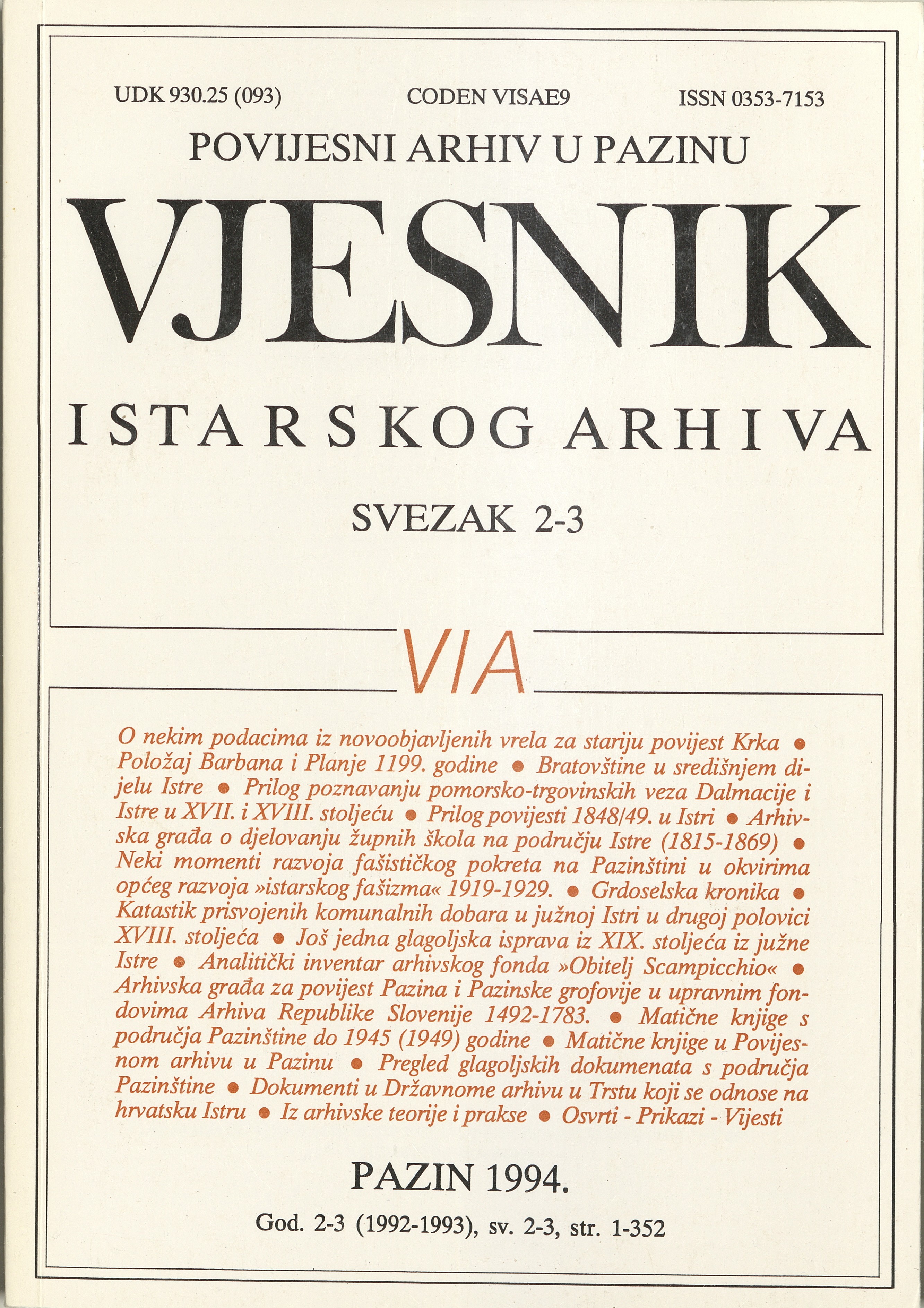Confraternities in interior Istria (a review on contents and structures of archival documents)
Abstract
Within manifold features in the past of the European West from the 10th to the 19th century, there is the phenomenon of laical confraternities. Confraternities are societies with exclusively religious motives. As they were numerous, had diversified activities and a strong influence on public and private life, in whole Europe as in our regions, the Author regards them wrongfully neglected in the Croatian historiography. The documents, kept in the Historical Archive in Pazin, in the Diocesan Archive in Poreč and many other archives in parishes of the Poreč-Pula Diocese, are still in such conditions to enable us to use them in scientific research. Even only a superficial thumbing of business books of confraternities gives us a look at the facts on cultural- educational activities and events in the past, on the spiritual life of the man from the street, on financial transactions, on building and the maintenance of profane and particularly church buildings, on agricultural works, the number and kinds of cattle, fishing etc. In this region, the original name for the confraternities’ business book is »quaderna« or more simply »libro«. Its measures are standard for the time: 22 x 29 cm, more rarely 11 x 29 cm. The book is really a collection of small volumes binded together within cardboard, sometimes leather covers. The pages were written on one or both sides, and they are always numbered, and always in Arabic numerals. The paper is relatively thick and rough, and rather highly hygroscopic. This, along with the ink, is the main reason that this kind of archive sources is generally very damaged. The moisture and the acid contents of the ink have simply corroded the paper: this is to be seen on those parts of the paper where the concentration of ink was the highest, at the beginning of the line where the writing instrument was full of ink and left a stronger mark. The confraternities’ business books in this region were generally written in Italian (Venetian substandard), Latin and Croatian language. There are some examples of mixed use of the three languages. The same applies to the script, almost always a humanistic variant, although the glagolithic is also present, likewise in whole books (as in Roč or Boljun), or on some pages only (as in Vižinada). According to Venetian sources towards the end of the 18th century there were around 600 such lay associations only in Venetian Istria, with an additional hundred in the Austrian part. They were most frequent in bigger towns: Koper, Umag, Rovinj, Poreč, Pula, Pazin, Motovun, Gračišće etc. In compliance with state reforms in the Austrian Empire at the end of the 18th century, and Napoleon’s legislation, confraternities began to fade out after a thousand years of existence. One thing is, nonetheless, certain: the confraternities have left an indelible trace in our regions, and they have to be better examined and researched.
Downloads
Published
Issue
Section
License

This work is licensed under a Creative Commons Attribution-NonCommercial 4.0 International License.

